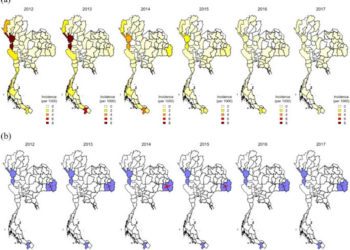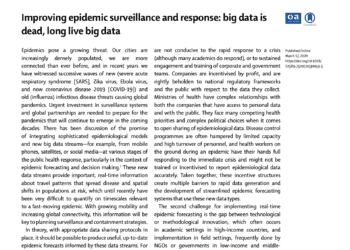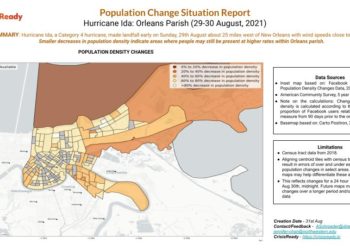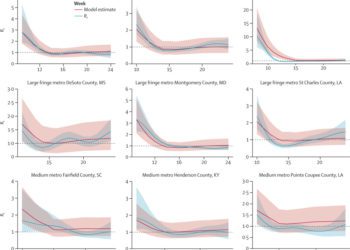Abstract
Mobility-related determinants of tuberculosis (TB) transmission and dispersal remain poorly understood, lagging behind recent advances for other epidemic pathogens. Multiple inherent features of TB infection contribute to this knowledge gap, including variable and often prolonged latency of infection, the slow mutation rate of Mycobacterium tuberculosis (Mtb), and high within-host diversity of Mtb populations in many patients.
Methods that use geographic distance between infections (for example, those that attempt to detect spatial clustering of infections) may fail to detect meaningful epidemiological patterns if connectivity and transmission linkages between locations are not consistently correlated with distance. Empiric measurement of human mobility patterns may improve the use of these methods in this situation.
Geolocated pathogen whole genome sequence data (i.e., sequence data that is linked to the home or clinic location for incident infections), and spatial patterns of genetic diversity and divergence in these data, have yielded important insights into the geographic origins and dispersal of drug-resistant TB and other epidemics. Models of geographic range expansion, which detect genetic signatures of a population expanding away from its origin, may provide an important tool for understanding the origin of novel TB strains.
Tuberculosis (TB) remains a leading infectious cause of death worldwide. Reducing TB infections and TB-related deaths rests ultimately on stopping forward transmission from infectious to susceptible individuals. Critical to this effort is understanding how human host mobility shapes the transmission and dispersal of new or existing strains of Mycobacterium tuberculosis (Mtb). Important questions remain unanswered. What kinds of mobility, over what temporal and spatial scales, facilitate TB transmission? How do human mobility patterns influence the dispersal of novel Mtb strains, including emergent drug-resistant strains? This review summarizes the current state of knowledge on mobility and TB epidemic dynamics, using examples from three topic areas, including inference of genetic and spatial clustering of infections, delineating source–sink dynamics, and mapping the dispersal of novel TB strains, to examine scientific questions and methodological issues within this topic. We also review new data sources for measuring human mobility, including mobile phone-associated movement data, and discuss important limitations on their use in TB epidemiology.



